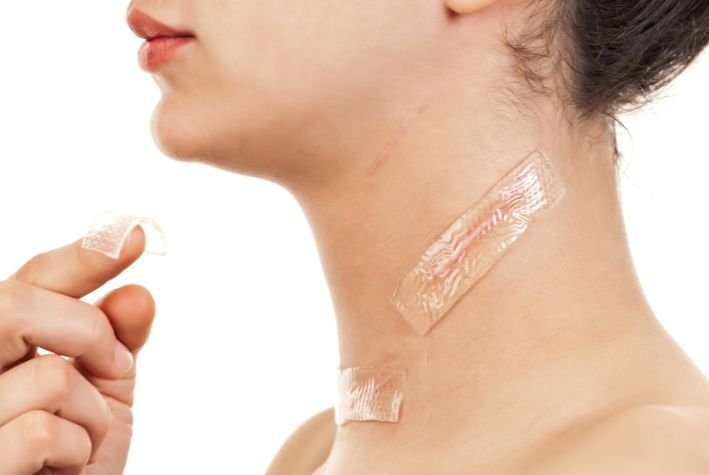surgical and trauma scar treatment sydney
Types of Surgical and Trauma Scars
Flat Linear Scars: well-aligned, thin scars
Hypertrophic Scars: Rasied scars that remain within the wound boundary
Keloid Scars: Scars that extend beyond the original injury
Atrophic Scars: Depressed scars due to collagen loss
Stretched Scars: Widened scars caused by tension during healing
Pigment-Altered Scars: Hyperpigmentation or hypopigmentation
the science of scar formation
Scarring is a natural part of the wound healing process, involving three overlapping phases: inflammation, proliferation, and remodelling. When this process is disrupted—due to factors like mechanical tension, delayed healing, infection, or genetic predisposition—it can result in excess collagen deposition (hypertrophic or keloid scars) or collagen loss (atrophic scars). Unlike normal skin, scar tissue contains disorganised bundles of type I and III collagen, fewer elastic fibres, altered blood vessel patterns, and persistent inflammation. As a specialist dermatologist, Dr Liz Dawes-Higgs uses advanced, evidence-based therapies to optimise healing, prevent problematic scarring, and improve the appearance and function of established surgical or trauma scars.
evidence-based scar Treatment options
Intralesional Corticosteroids
Intralesional steroid injections (such as triamcinolone acetonide) reduce fibroblast activity, collagen synthesis, and inflammation. Especially effective for hypertrophic and keloid scars, sometimes combined with agents like 5-fluorouracil or botulinum toxin for optimal results.
Laser Scar Treatment
Vascular lasers (pulsed dye laser, 595 nm) target redness and blood vessels, while fractional ablative lasers (CO₂, erbium:YAG) stimulate new collagen formation and smooth scar texture. Early laser intervention is supported by clinical evidence for scar modulation and improved outcomes.
Silicone Gel and Sheets
Silicone gel and silicone sheets provide occlusion and hydration, helping to reduce scar thickness, itch, and discomfort. Consistent use (12+ hours/day for 2–3 months) is proven to improve scar appearance.
Surgical Scar Revision
Procedures such as Z-plasty, W-plasty, or elliptical excision can refine or reorient scars, reducing tension and improving cosmetic results. Often combined with laser or steroid therapy to minimise recurrence.
Taping and Pressure Therapy
Paper or silicone tape, and pressure dressings, reduce fibroblast activation and scar elevation. Used during the remodelling phase (6–12 weeks post-injury) to minimise scar width and height.
Topical and Pigment-Modulating Agents
Topical retinoids, hydroquinone, azelaic acid, tranexamic acid, and niacinamide can improve epidermal turnover, texture, and pigmentation—especially helpful for scars with colour changes in darker skin types.
Proactive Scar Management
Dermatologist-led scar management focuses on prevention and early intervention. This includes meticulous wound care, infection prevention, sun protection, and early use of lasers or topical treatments for high-risk scars (e.g., in Fitzpatrick IV–VI skin, history of keloids, or scars in high-tension areas).
specific scar Laser options at nsdl
There are many types of lasers used in the treatment of scars, but my favourite are the vascular laser combined with the fractionated ablative carbon dioxide laser. These 2 lasers can be used on the same day.
At Northern Sydney Dermatology & Laser, we use a Candela VBeam (595nm) laser - this is especially for the red components of the scar. Usually this treatment is performed every month. This laser has a dynamic cooling device that delivers a cooling mist when the laser pulse is emitted, so that it is well tolerated and more comfortable during the treatment. It feels like a small elastic band on the skin during treatment. A few treatments are generally needed.
The vascular laser can be combined on the same day with a CO2 ablative laser which is used at low densities and high joules to penetrate deeply in to a scar and help in collagen remodelling. Again, a few treatments are needed and these are spaced 4-6 weeks apart.
In darker skin tones, a fractionated non-ablative laser can be used and also radiofrequency. We have both of these lasers at Northern Sydney Dermatology & Laser.
why choose dr liz for scar treatment in sydney?
Dr Liz Dawes-Higgs combines expertise in cutaneous biology, procedural dermatology, and advanced laser therapies to deliver tailored scar management for all skin types and scar presentations. Every treatment plan is customised to your scar’s characteristics, skin type, and personal goals—maximising both cosmetic and functional outcomes.
Surgical and trauma scars can be improved with the right, evidence-based approach. For an individualised assessment and scar treatment plan, book a consultation with Dr Liz Dawes-Higgs at Northern Sydney Dermatology & Laser.
This page is for general information only and does not replace individual medical advice. For personalised care, please book a consultation.


